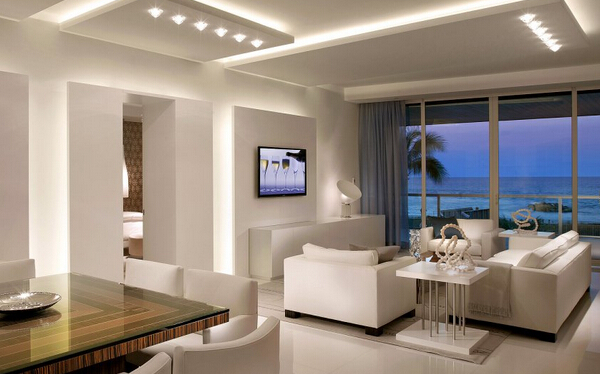Driving Towards A Better Future
This article is based on an interview with:
-
Anwar Aslam, Senior Applications Engineer at Bridgelux
-
Dr. Shiva Rai, Product Development Engineering Manager at Bridgelux
Let’s start with the basics: what is a driver?
A driver is something that converts AC input into DC output. Most electronics today including your cell phone and laptop operate on DC by converting the AC input coming from the wall outlet.
LEDs operate only under DC input, and require an input converter that can provide the desired DC input (voltage and current) into the LEDs. This converter is known as a driver.
Drivers have been around for quite some time. They were used for computers or other items that plugged into traditional wall outlets. Once LEDs became more prevalent, drivers became more specific or targeted to lighting applications.
Most drivers that we at Bridgelux use are AC to DC, but AC-only drivers also exist. Most drivers also generally cover global voltage ranges.
Are drivers and power supplies the same thing?
No.
Drivers are typically used for LED lighting while power supplies are used in different applications such as powering a laptop. Power supplies can support a wider range of applications, but cannot always support an LED.
Do all LED light sources require a driver?
Yes.
The driver is the interface that generates light. If you have no DC electrical source through the driver, you have no light.
What’s constant current and constant voltage for LEDs?
LEDs have two parameters that need to be met to function properly: current and voltage. Current needs to remain constant regardless of how the voltage adjusts to the LED needs. Likewise, voltage needs to remain constant regardless of the LED configuration. For LEDs, you need constant current to produce constant light output.
If you have 30V LED, for example, but driver is only 20V, it’s not enough to turn the light on. Make sure that the output voltage of the driver covers the voltage range of the LED light source you are using.
Bottom line, consistent light output is dependent on constant current.
What are the top three things people need to know about drivers and LED lighting?
First, you need to ensure that your driver can operate in your specific global area. For example, if you’re in the U.S., you need a driver that supports 110V.
Second, because LEDs come in different voltages and currents, the most important thing you need to know is to find the correct corresponding driver. For example, if the voltage of your LED is 30-36V, and requires 750mA, you should look for drivers with an output voltage greater than 36V and a maximum current above 750mA.
Finally, we need to understand the efficiency of drivers. Power from a wall goes through driver to the electrical source of the LED. But in between that transition there are losses due to heat and other factors, so a driver needs to be highly efficient to prevent these losses. The typical efficiencies of LED drivers are between 80-90% when operating at their full load.
Why would someone not keep current constant? Why would someone not want light constant?
When the LED load on the driver is not constant, it is better to use a constant voltage driver that provides a constant output voltage and varies the current according to the load. Though the output current can vary, every constant voltage driver has a maximum output current rating.
I heard Bridgelux recently announced its Dual Channel Driver. What’s that about?
In March, we announced the Bridgelux Dual Channel Driver, which enables connectivity with sensors and controls allowing customers to take advantage of CCT tunable lighting within their installations. The Driver works easily with Bridgelux Vesta® Series Tunable White Linear products, as well as other tunable light sources, making it ideal for the troffer market.
At Bridgelux, we are committed to delivering strong solutions that allow our customers to develop products that are ready for the world of IoT and networked infrastructure.
I’m a fixture manufacturer using Bridgelux light sources and my driver is acting up. Who should I contact with questions?
If you use both a Bridgelux light source and driver, contact Bridgelux. We are a one-stop-shop for your lighting solutions.
Alternatively, if you are using another driver, we recommend that you contact driver manufacturer. Driver companies might not be as familiar with the lighting integration since they focus simply on the AC to DC driver.
Do you have any predictions for the future of the driver industry in general?
Shiva: As we are learning more about Circadian lighting, the need to rethink driver architecture becomes increasingly important and complex. We are seeing a move from single channel to multi-channel drivers to meet the needs of these new solutions such as Circadian lighting, and healthcare lighting.
Shiva: I believe miniaturization of drivers will happen in the future. Especially in smart lighting, where more components are needed to create the smart environment, the entire fixture, including the driver, needs to work together efficiently in a compact form factor. We will need to maximize light output while still managing heat and maintaining quality of light using a smaller driver footprint.
Anwar: I would like to see more work done with different types of smart lighting. Dimming is controlled not just through power coming from the wall, but through mobile devices as well. A user with a cell phone needs to communicate with the fixture using a protocol such as Bluetooth, which is on a different voltage. We’re not ready to have one driver service different voltages in a smart lighting type environment.
Anwar: Capacitor problems in drivers are pretty typical. If there’s a way to have an AC to DC driver without a capacitor, you can extend the life of the fixture. The weakest link of a fixture is the lifetime of the weakest element, which is often the driver due to these frequent capacitor fails. It would be great future driver development efforts focused on creating a capacitor with a lifetime close to the lifetime of an LED so the user can use the LED to the fullest extent of its life and purpose.
##


